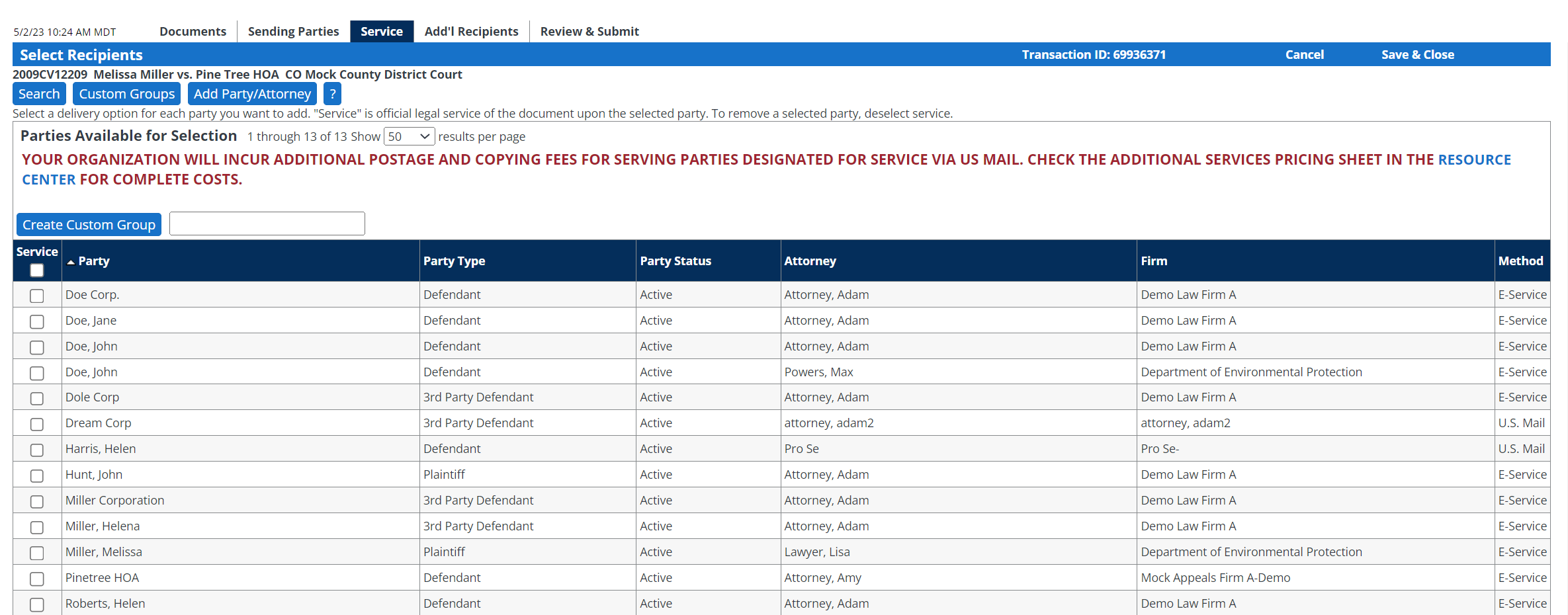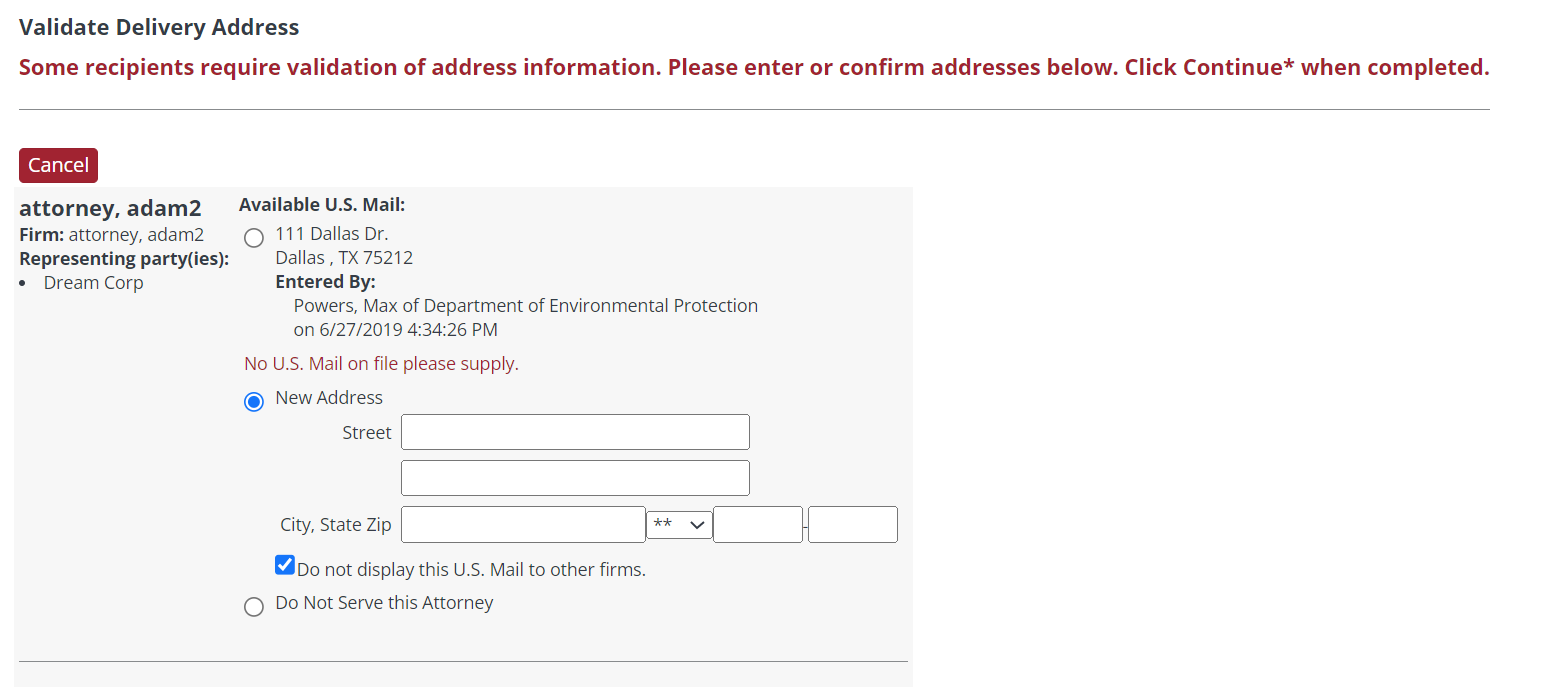Did you know you can complete physical mail service right in the File & Serve application?
Under most circumstances, we recommend eService as our preferred service method. But eService is not always an available option. In those scenarios, traditional mail is a tried-and-true service method that works but can take a lot of effort. Luckily, with FSX, you don’t need to gather envelopes, stamps, or print any documents, as we can take care of the whole process on your behalf.
Here, we will go through some of the benefits of US Mail Service in general and how to access it in the application.
When to Consider US Mail Service
Us Mail is a great option when a party doesn’t have a File & ServeXpress account. (Reminder: anyone can register for a File & ServeXpress account, even if you are not a lawyer or law firm employee. Anyone registered for a File & ServeXpress account can receive eService on the application.)
While email service is another option that doesn’t require all parties to access FSX, it’s not always the best option. US Mail Service has a few distinct advantages over email service:
- Verifiable proof of delivery. You know when and where the document was delivered with the USPS. This cuts down the likelihood/success of non-service disputes.
- Email doesn’t always adhere to the rules of civil procedure. Before using email service, check the rules of your local court – it’s possible email service is not an acceptable method in your area.
- Email has additional security concerns beyond those of mail delivery. In contrast, US mail is almost always an acceptable service method for sensitive documents.
Why Serve through Mail with File & ServeXpress?
You can take the extra step to serve through the mail yourself outside of the transaction on File & ServeXpress (you can select not to serve parties through the application). But filing and serving in one transaction through File & ServeXpress will save you a significant amount of time.
Instead of printing out all the documents, stuffing envelopes, finding stamps, and arranging for mail pickup/courier, the File & Serve application handles it for you. Choosing US Mail service on File & Serve allows you to complete the whole filing procedure in one action and move on to more meaningful work for your clients.
It also allows you to track the entire transaction history in one place. Instead of checking on service deliveries through another website, you can see the service status in-app. Once done, you will have a certificate of service available through the “transaction report.”
How to use US Mail Service through File & ServeXpress
As long as the party is set up for US Mail Service upon creation, you can seamlessly serve them alongside any other parties that use eService.

In the service tab (after the sending parties tab), any party configured for US Mail Service will have the “US Mail” label in the method tab. Simply select the parties you wish to serve and continue.
Instead of moving on to additional recipients tab, you will need to validate the address information is correct for US Mail recipients. You can select any available addresses, create a new address, or decline to serve the party through this transaction. Here’s an example of the prompt:

Outside of the address validation, you can complete the filing as you would any other.
Once you complete the order, you can check the status of your mail service through the “transaction details” page and view a certificate of service using the “transaction report”.
If you need to complete mail service for the case again, File & ServeXpress makes it easy. The address information previously used is saved to each party (but of course, you can change it in the address validation prompt if necessary).
You can view pricing information for US Mail Service on the Optional Services Pricing Sheet within the Resource Center of the File & Serve application.
Have Additional Questions?
If you have additional questions about US Mail service through File & ServeXpress, or any of our other available service methods, you can reach our customer support team here.